Abstract
The bacterium that causes canine abortion has polynucleotide sequences similar, in deoxyribonucleic acid (DNA)-DNA homology studies, to those of Brucella suis and, by inference from previous data, those of B. abortus and B. melitensis as well as B. neotomae. Therefore, the organism causing canine abortion appears to be a member of the genus Brucella. DNA preparations from Serratia marcescens, Alcaligenes faecalis, and Bordetella bronchiseptica, 58, 62, and 66 mole% guanine plus cytosine, respectively, do not have detectable polynucleotide sequence homologies with B. suis DNA which is 56 mole% guanine plus cytosine. B. ovis DNA lacks some of the polynucleotide sequences present in B. suis DNA and appears to be a deletion mutant. However, a large proportion of B. ovis polynucleotides are similar to those of other Brucella species, which supports the inclusion of B. ovis in the genus.
Full text
PDF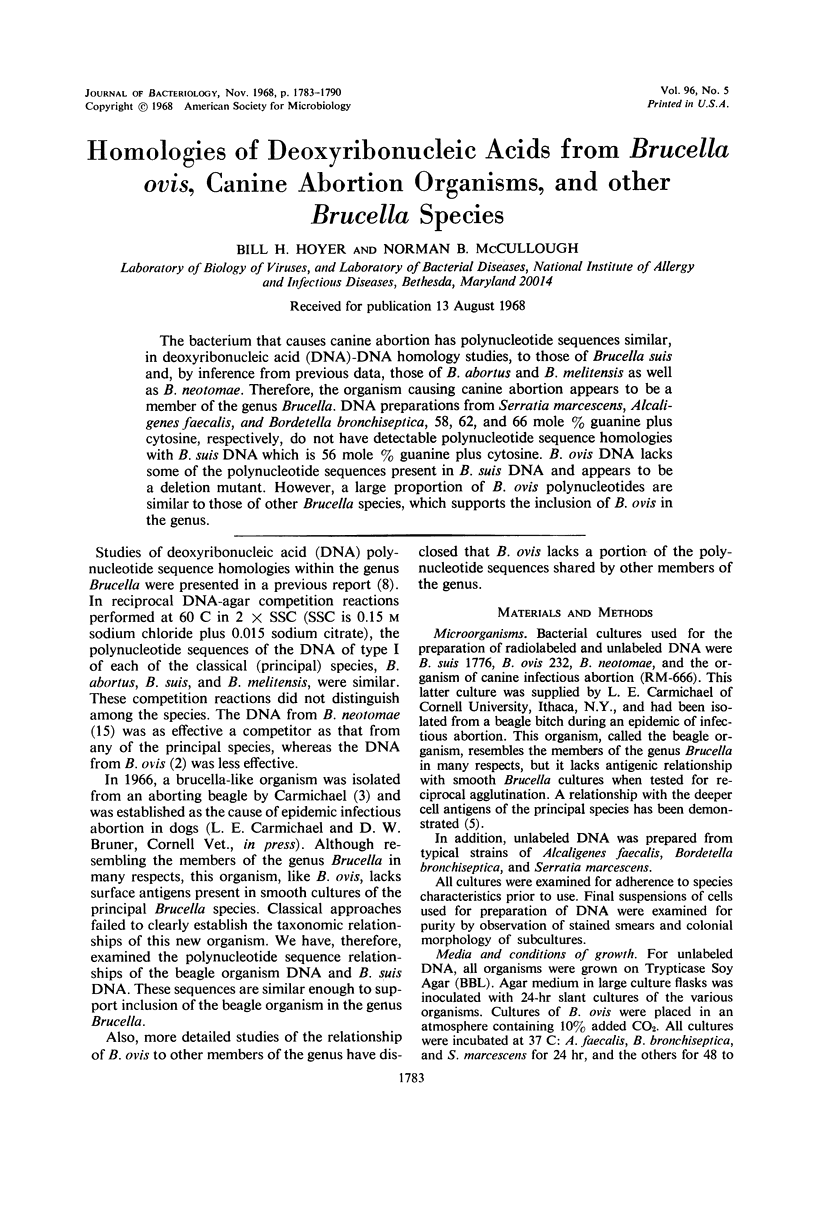
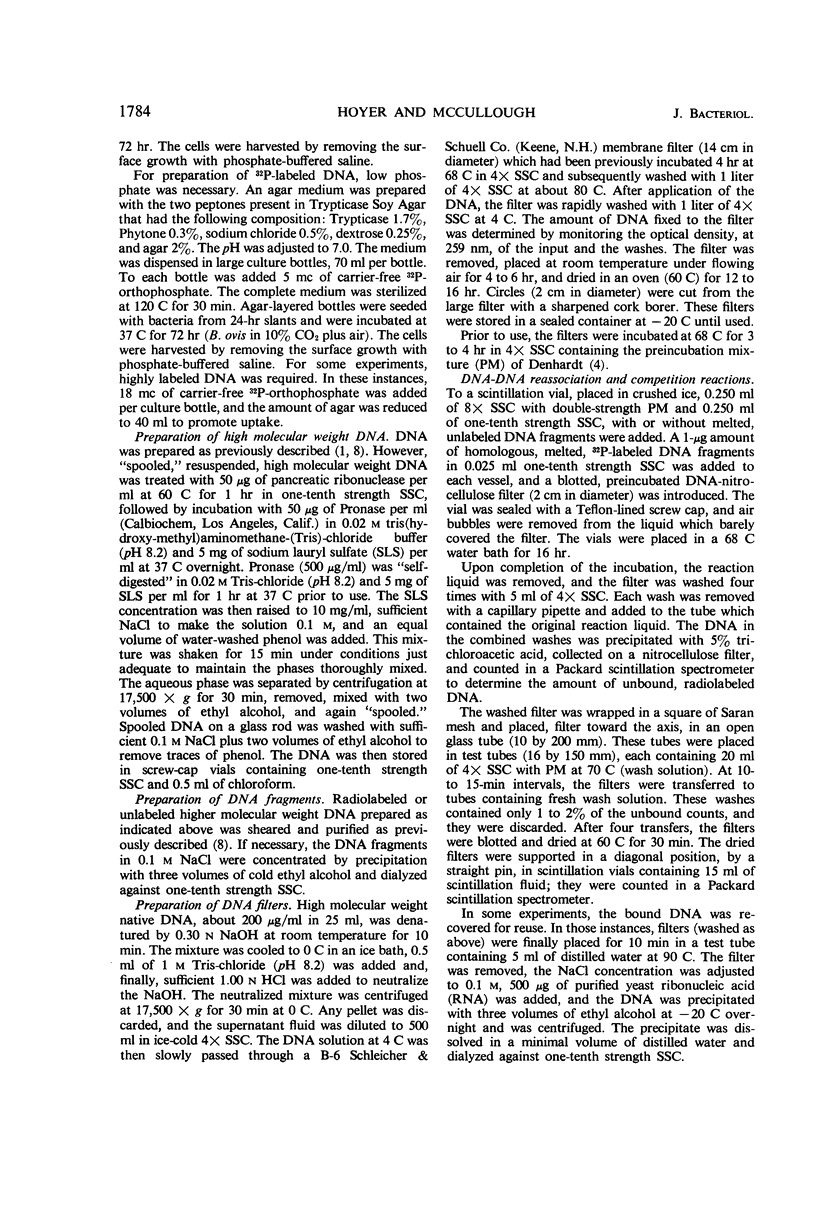
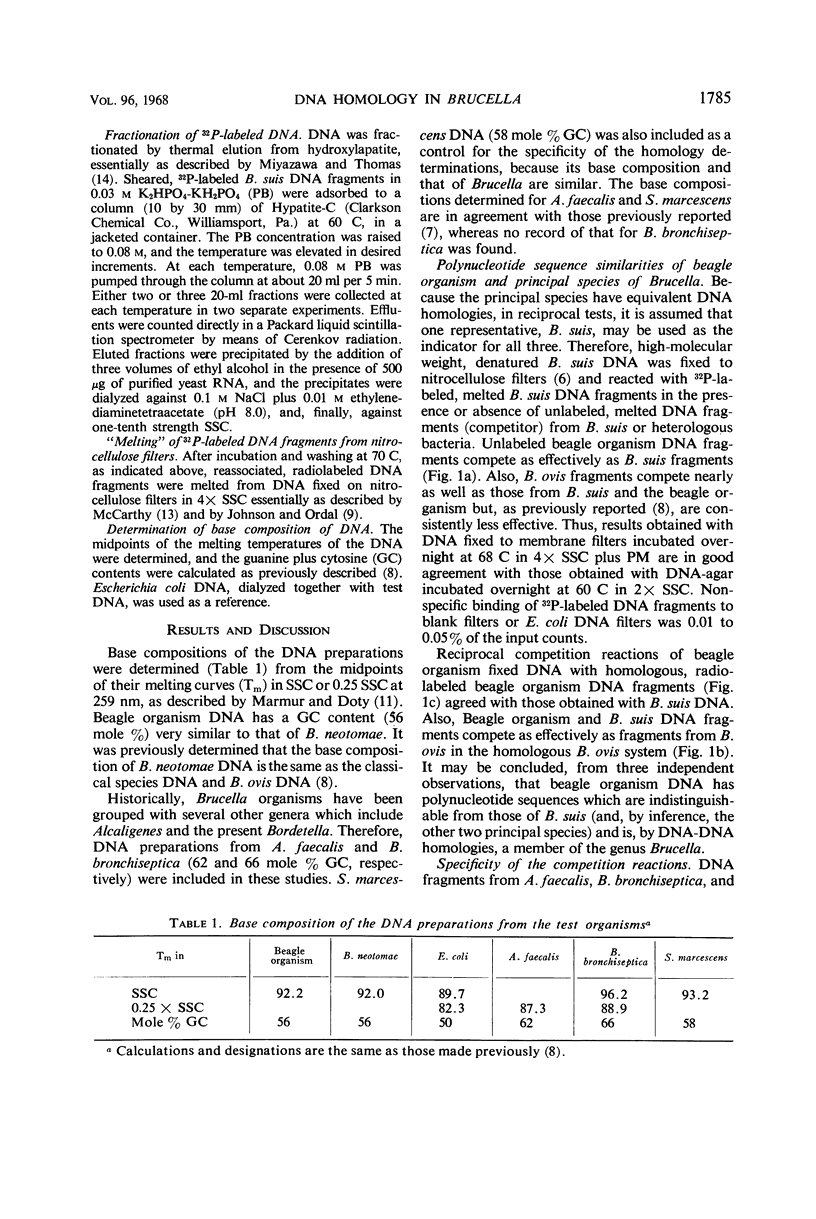
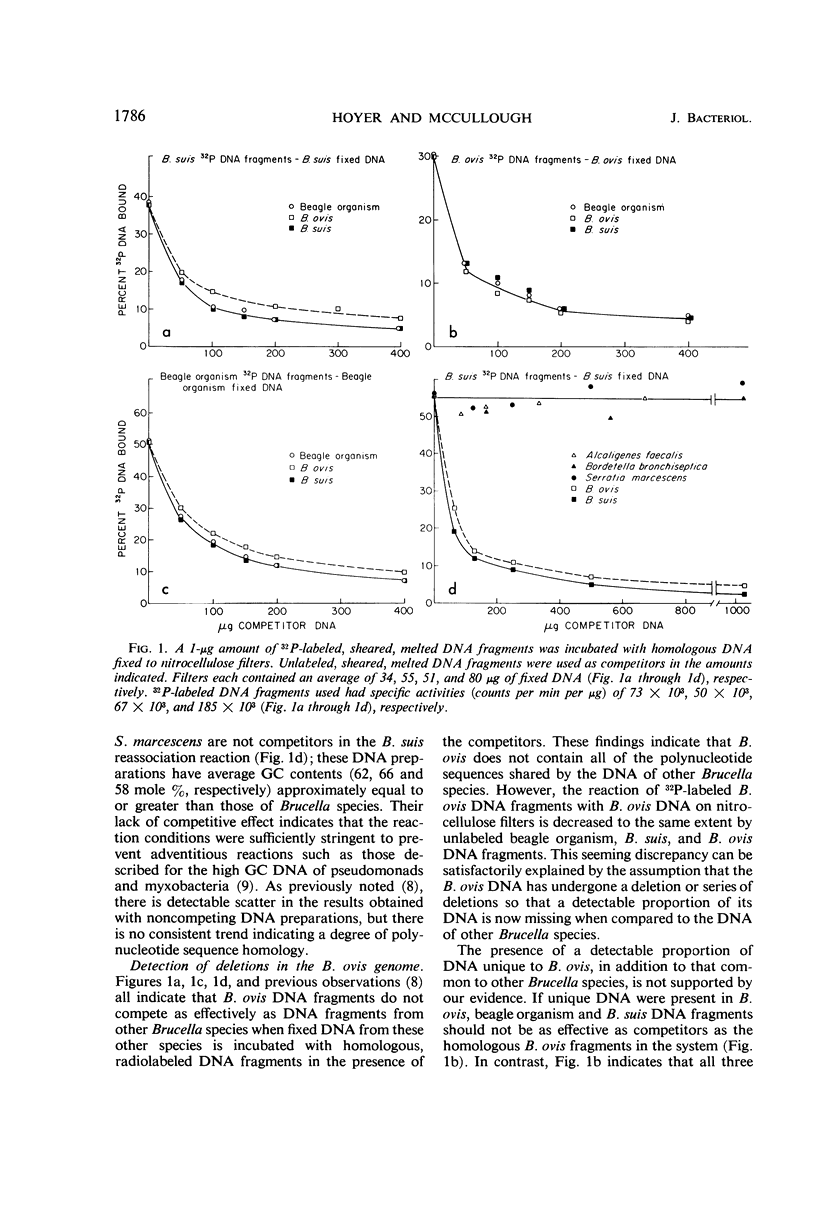
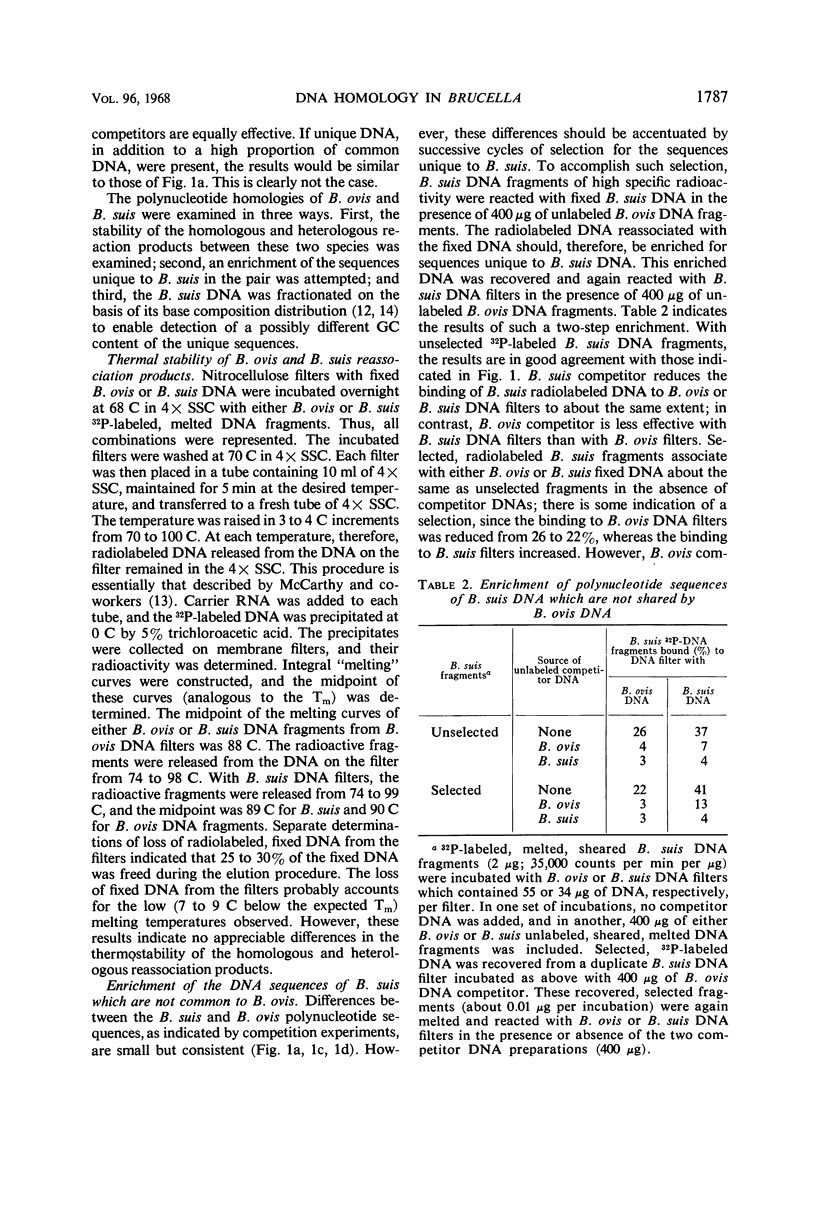
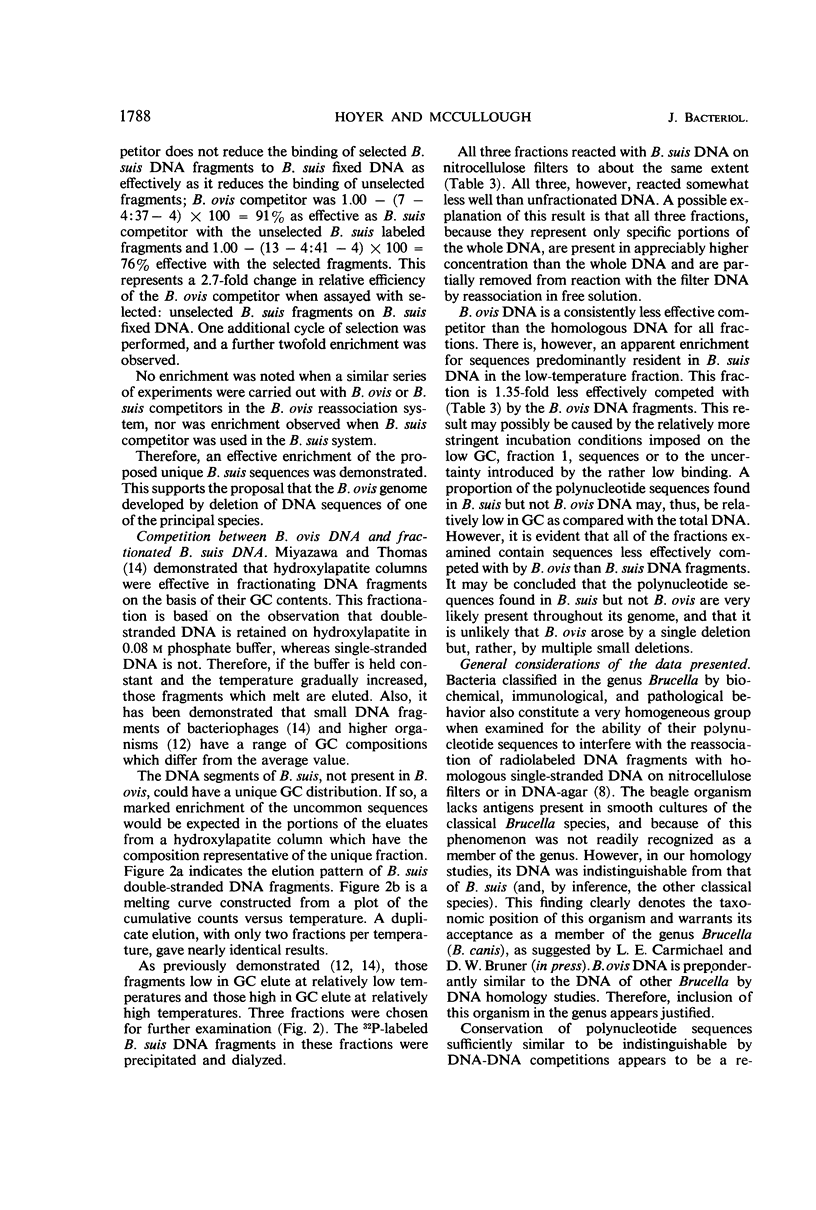
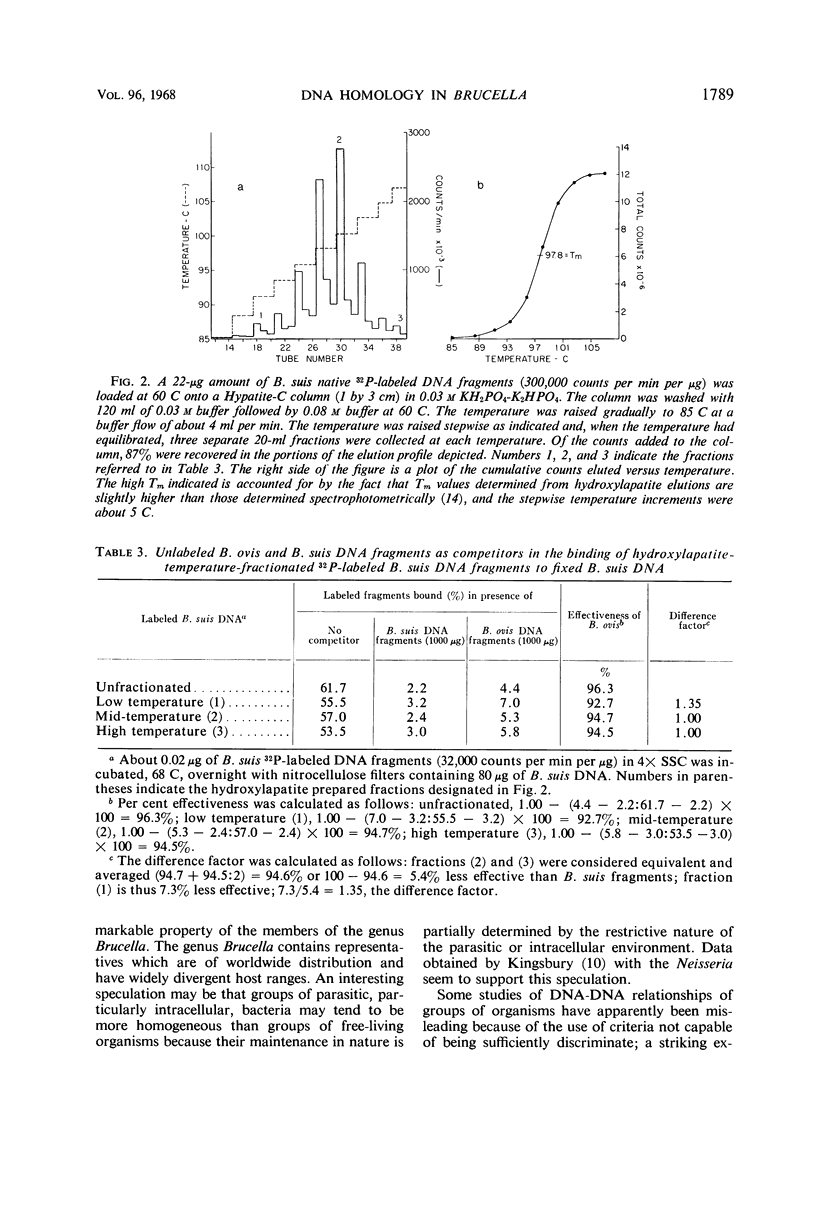
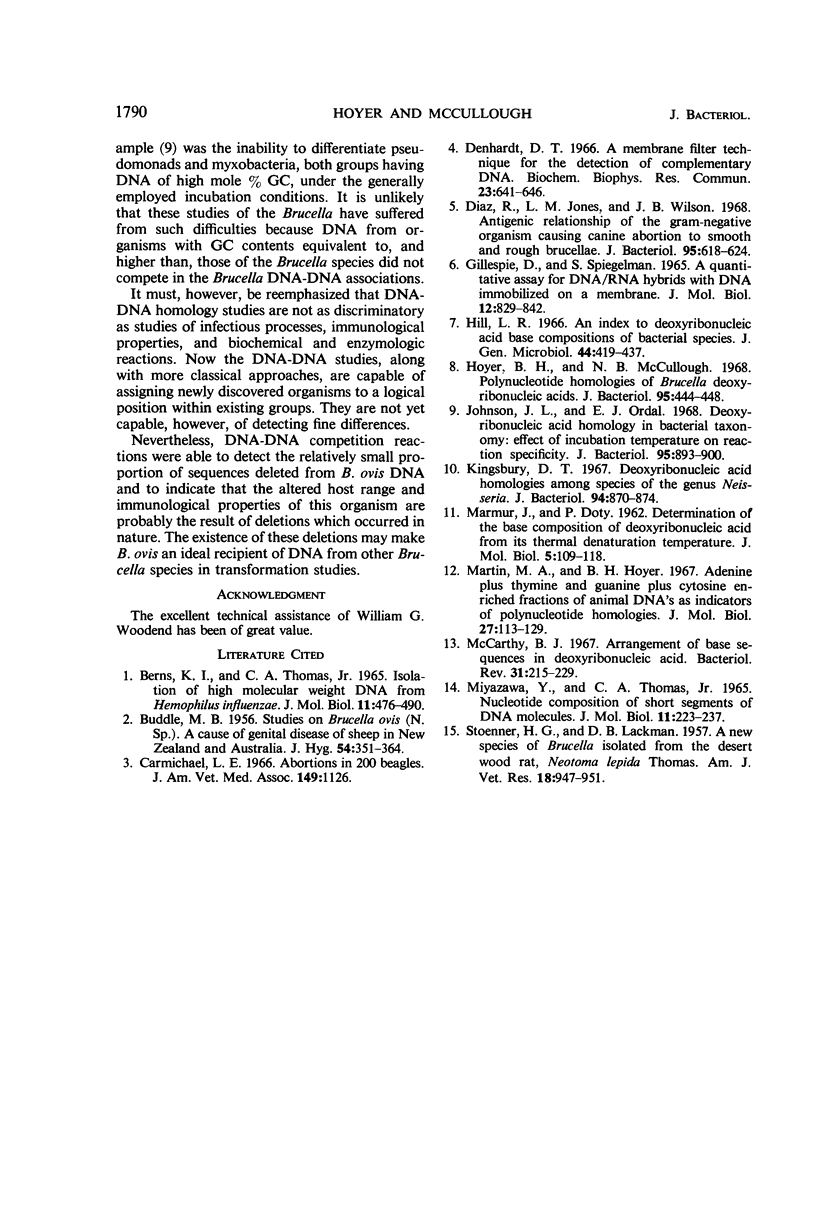
Selected References
These references are in PubMed. This may not be the complete list of references from this article.
- BERNS K. I., THOMAS C. A., Jr ISOLATION OF HIGH MOLECULAR WEIGHT DNA FROM HEMOPHILUS INFLUENZAE. J Mol Biol. 1965 Mar;11:476–490. doi: 10.1016/s0022-2836(65)80004-3. [DOI] [PubMed] [Google Scholar]
- BUDDLE M. B. Studies on Brucella ovis (n.sp.), a cause of genital disease of sheep in New Zealand and Australia. J Hyg (Lond) 1956 Sep;54(3):351–364. doi: 10.1017/s0022172400044612. [DOI] [PMC free article] [PubMed] [Google Scholar]
- Denhardt D. T. A membrane-filter technique for the detection of complementary DNA. Biochem Biophys Res Commun. 1966 Jun 13;23(5):641–646. doi: 10.1016/0006-291x(66)90447-5. [DOI] [PubMed] [Google Scholar]
- Diaz R., Jones L. M., Wilson J. B. Antigenic relationship of the gram-negative organism causing canine abortion to smooth and rough brucellae. J Bacteriol. 1968 Feb;95(2):618–624. doi: 10.1128/jb.95.2.618-624.1968. [DOI] [PMC free article] [PubMed] [Google Scholar]
- Gillespie D., Spiegelman S. A quantitative assay for DNA-RNA hybrids with DNA immobilized on a membrane. J Mol Biol. 1965 Jul;12(3):829–842. doi: 10.1016/s0022-2836(65)80331-x. [DOI] [PubMed] [Google Scholar]
- Hill L. R. An index to deoxyribonucleic acid base compositions of bacterial species. J Gen Microbiol. 1966 Sep;44(3):419–437. doi: 10.1099/00221287-44-3-419. [DOI] [PubMed] [Google Scholar]
- Hoyer B. H., McCullough N. B. Polynucleotide homologies of Brucella deoxyribonucleic acids. J Bacteriol. 1968 Feb;95(2):444–448. doi: 10.1128/jb.95.2.444-448.1968. [DOI] [PMC free article] [PubMed] [Google Scholar]
- Johnson J. L., Ordal E. J. Deoxyribonucleic acid homology in bacterial taxonomy: effect of incubation temperature on reaction specificity. J Bacteriol. 1968 Mar;95(3):893–900. doi: 10.1128/jb.95.3.893-900.1968. [DOI] [PMC free article] [PubMed] [Google Scholar]
- Kingsbury D. T. Deoxyribonucleic acid homologies among species of the genus Neisseria. J Bacteriol. 1967 Oct;94(4):870–874. doi: 10.1128/jb.94.4.870-874.1967. [DOI] [PMC free article] [PubMed] [Google Scholar]
- MARMUR J., DOTY P. Determination of the base composition of deoxyribonucleic acid from its thermal denaturation temperature. J Mol Biol. 1962 Jul;5:109–118. doi: 10.1016/s0022-2836(62)80066-7. [DOI] [PubMed] [Google Scholar]
- MIYAZAWA Y., THOMAS C. A., Jr NUCLEOTIDE COMPOSITION OF SHORT SEGMENTS OF DNA MOLECULES. J Mol Biol. 1965 Feb;11:223–237. doi: 10.1016/s0022-2836(65)80053-5. [DOI] [PubMed] [Google Scholar]
- Martin M. A., Hoyer B. H. Adenine plus thymine and guanine plus cytosine enriched fractions of animal DNA's as indicators of polynucleotide homologies. J Mol Biol. 1967 Jul 14;27(1):113–129. doi: 10.1016/0022-2836(67)90355-5. [DOI] [PubMed] [Google Scholar]
- McCarthy B. J. Arrangement of base sequences in deoxyribonucleic Acid. Bacteriol Rev. 1967 Dec;31(4):215–229. doi: 10.1128/br.31.4.215-229.1967. [DOI] [PMC free article] [PubMed] [Google Scholar]
- STOENNER H. G., LACKMAN D. B. A new species of Brucella isolated from the desert wood rat, Neotoma lepida Thomas. Am J Vet Res. 1957 Oct;18(69):947–951. [PubMed] [Google Scholar]


